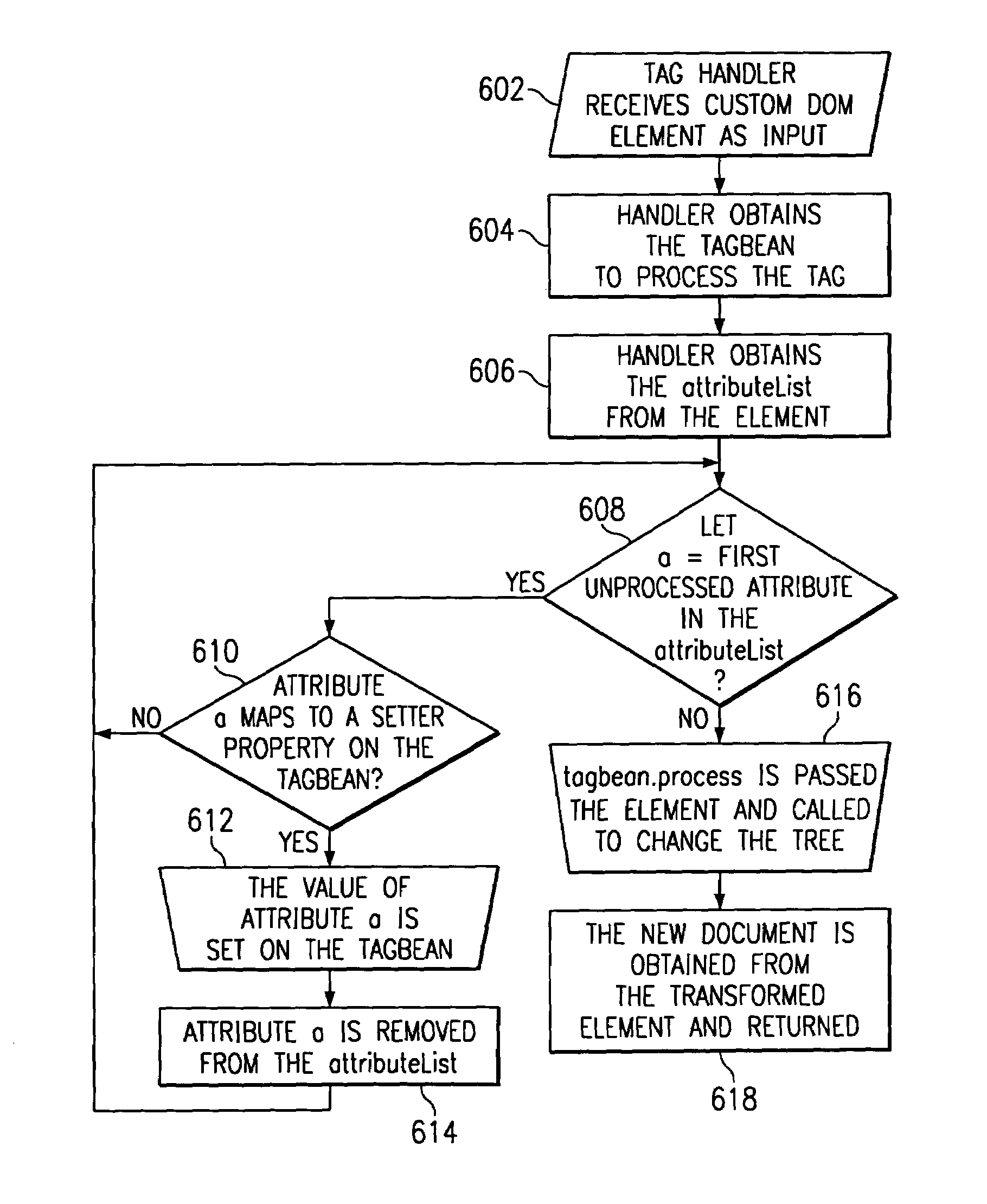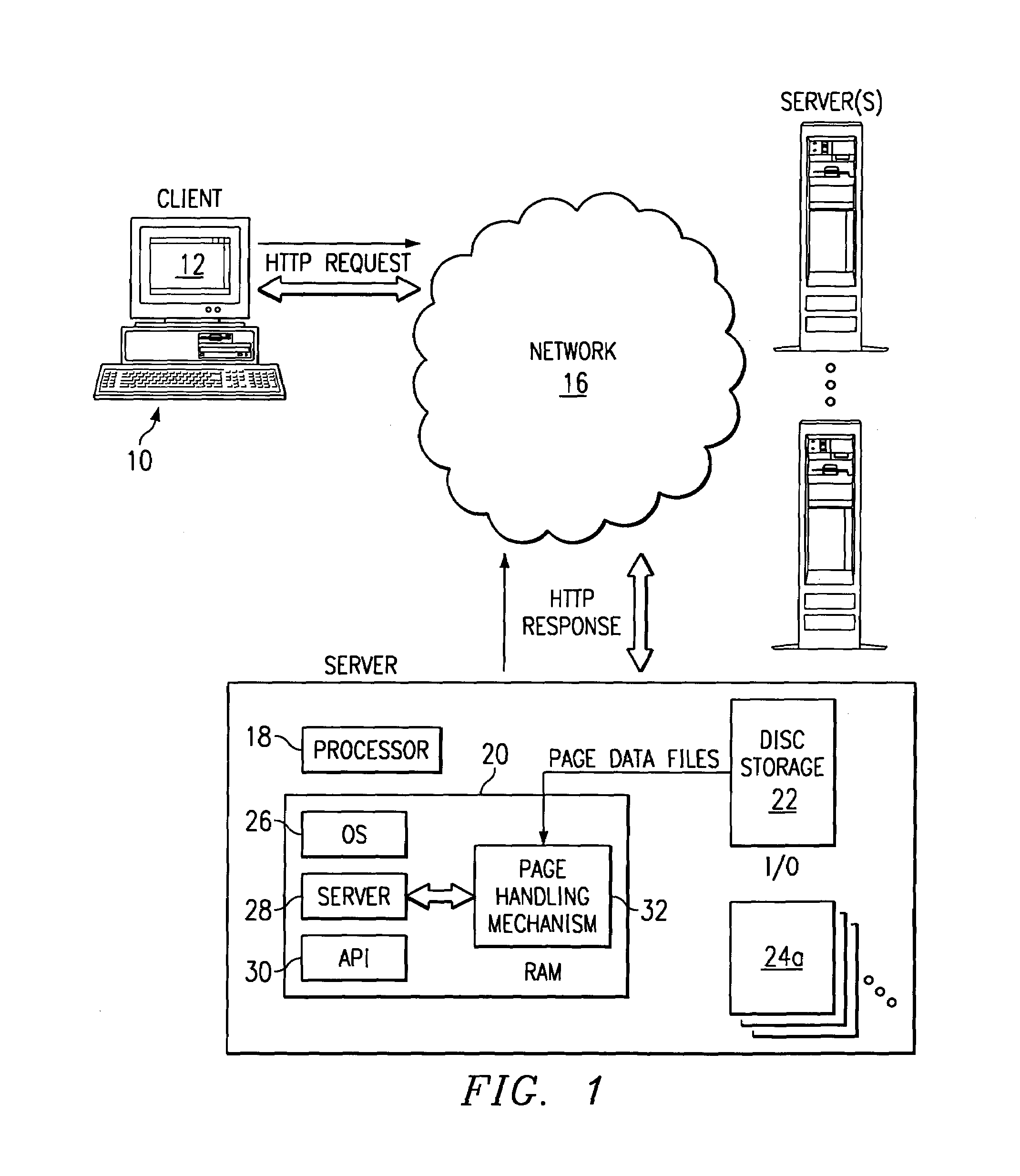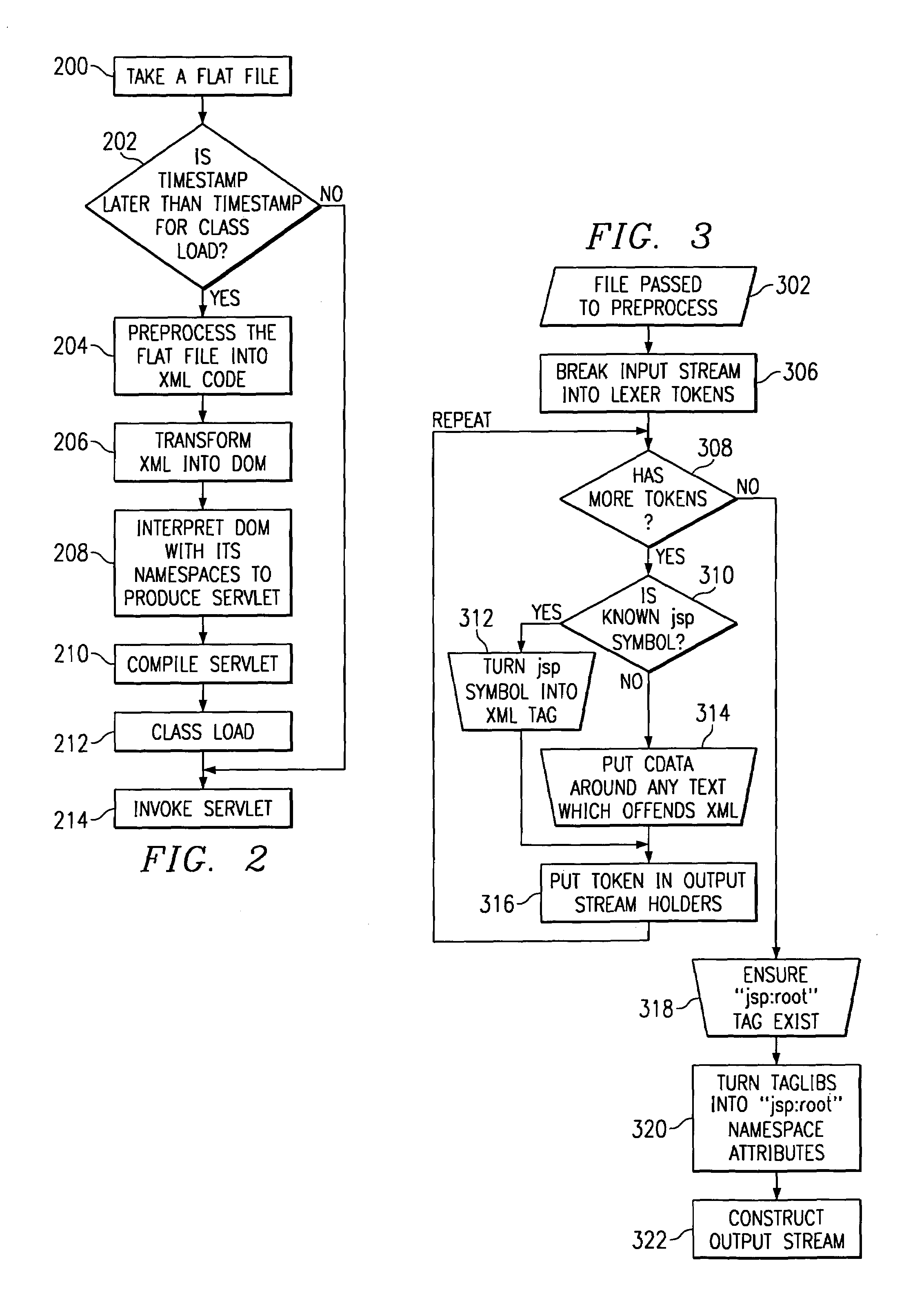Extensible markup language (XML) server pages having custom document object model (DOM) tags
a markup language and document object technology, applied in the field of internet publishing technologies, can solve the problems of complex side scripting on a web page, inability to provide html tags, and limitations of existing techniques for serving dynamic conten
- Summary
- Abstract
- Description
- Claims
- Application Information
AI Technical Summary
Benefits of technology
Problems solved by technology
Method used
Image
Examples
examples
[0110]As has been previously described, the flowchart of FIG. 2 illustrates the basic translation functionality of the present invention. An example of this operation is now provided. In the following example, mixedLanguages.xsp is a flat input file, mixedLanguagesDOM1.txt is a representation of the DOM after the input file has been parsed and some metadata has been added to the DOM, mixedLanguagesDOM2.txt is a representation of the DOM after the custom tags in the input file have been processed (in this case, the tag is a custom tag, with the inner tag processed before the outer tag, with the resulting DOM then ready to be walked by the servlet generator routine), and mixedLanguagesServlet.java is the servlet generated by walking the DOM that complies with the JSP 1.0 specification.
mixedLanguages.xsp
[0111][0112][0113][0114][0115]String user=request.getParameter(“user”);[0116]if (user ==null) {[0117][0118]No one is logged in.[0119][0120][0121]var int x=0;[0122]x=x+1;[0123][0124][01...
PUM
 Login to View More
Login to View More Abstract
Description
Claims
Application Information
 Login to View More
Login to View More - R&D
- Intellectual Property
- Life Sciences
- Materials
- Tech Scout
- Unparalleled Data Quality
- Higher Quality Content
- 60% Fewer Hallucinations
Browse by: Latest US Patents, China's latest patents, Technical Efficacy Thesaurus, Application Domain, Technology Topic, Popular Technical Reports.
© 2025 PatSnap. All rights reserved.Legal|Privacy policy|Modern Slavery Act Transparency Statement|Sitemap|About US| Contact US: help@patsnap.com



